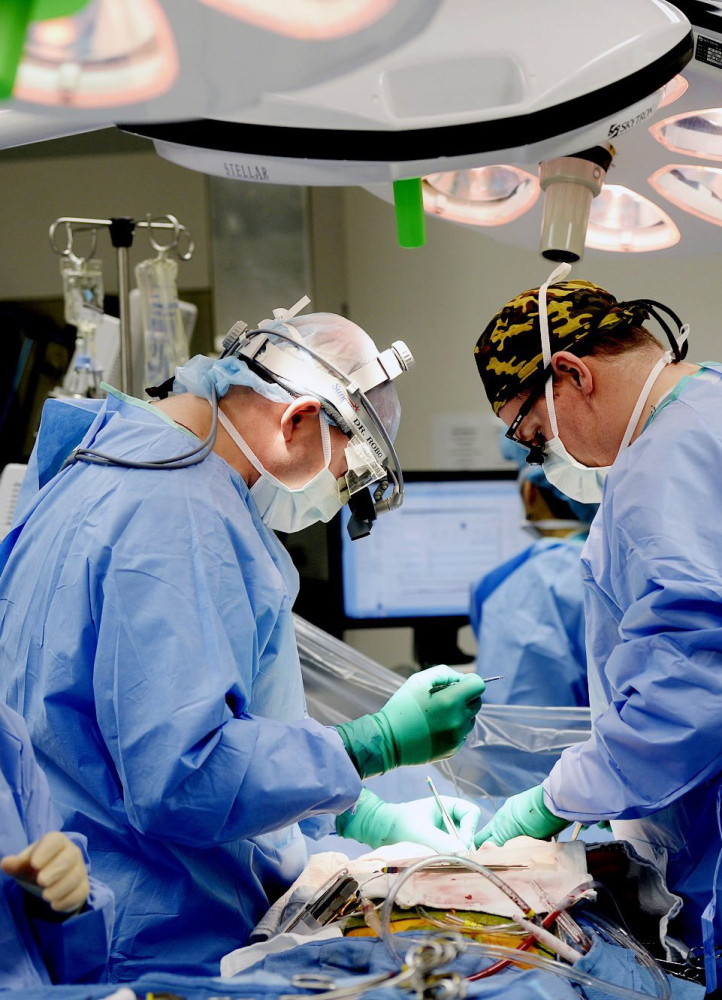BANGOR — There are 1.3 million people who live in Maine. Mainers are a special and tough breed. We love, live and give with great gusto. We care about each other and our state.
Imagine the outrage if someone announced, “We have a preventable problem that is going to wipe out the entire population of Maine in just three years!”
Such a problem exists, and it’s called “preventable health care harm.”
Everyone in Maine and the U.S. who uses health care is at risk.
If things don’t change, as many as 1.3 million people will die in the next three years because of preventable infections in hospitals, medication mistakes and communication snafus. This figure is based on a Journal of Patient Safety article that estimated up to 440,000 patients die every year because of preventable health care harm. It is the third leading cause of death.
KEEPING IT UNDER THE RADAR
Patients die, quietly and separately, in hospitals in every state. Families grieve one at a time. This misery and suffering is spread far and wide. There is no outrage because great efforts are made to keep this problem under the radar, in order to protect hospitals and providers from accountability and litigation. Not all cases of preventable harm or deaths are counted, so the total may be much higher than stated above.
Patients or their survivors are stifled in many different ways. In many, if not most cases, hospitals deny that they did anything wrong.
They may claim that the “standards of care were met.” Getting accurate and truthful answers from harmers is a challenge in most cases. Getting any kind of resolution or support is even more challenging.
Patients who do not die because of the harm may suffer great physical, emotional and financial losses instead. Everything is stacked against patients in this equation. Injured patients are even expected to pay for the care that harmed them!
Although this is the current state of affairs, some health care organizations, both private and public, have not made zero preventable harm a priority. Others began to work on patient safety, but interest has waned. Health care conferences are less likely these days to tackle the third leading cause of death.
Just recently, the Agency for Healthcare Research and Quality released a little bit of good news.
This article revealed that over a three-year period, there has been a 17 percent reduction in health care harm nationally, which is far from the four-year goal of a 40 percent reduction set by the Partnership for Patients, a public-private initiative to improve health care quality, safety and affordability. That means 50,000 lives were saved.
Twenty-three Maine hospitals signed the P4P pledge to work toward the 40 percent reduction. Fifty thousand people is more than the population of my small city of Bangor. Each of those precious lives is so important, but the number is minuscule considering the bigger picture. It is actually only a 3 percent decrease in deaths, using the figure of 1.3 million over three years.
The inherent threat of releasing and touting such results is that organizations will stop focusing on patient safety, and hospitals will rest on their laurels and stop funding the programs necessary to bring harmful events to zero. Rather than building on these small successes, they may move beyond them.
INFECTIONS KILL 75,000 EACH YEAR
In 2009, my father, John P. McCleary Sr., died because of a preventable hospital-acquired infection. It never should have happened. But it continues. At least 75,000 people die of hospital-acquired infections each year, and about a quarter of them are caused by methicillin-resistant staphylococcus aureus, or MRSA. More die of sepsis, which can be the result of any infection.
My state-level work on hospital-acquired infections has introduced me to many Mainers who have been victims of these infections. They have all been infected as a result of their health care. Some have become disabled, others have died. All have suffered intensely and unnecessarily.
According to several prominent reports, Maine has some of the safest hospitals in the country. As lucky as we are to be able to say that, the reality is that Maine does have its fair share of medical error and infection victims.
Zero is the only acceptable goal for both preventable medical errors and related deaths. I can’t think of a single family member, friend or acquaintance who I would agree to lose because of preventable health care harm. I trust that anyone reading this would feel exactly the same way.
— Special to the Telegram
Send questions/comments to the editors.


